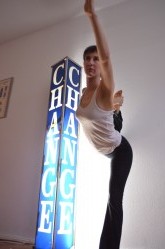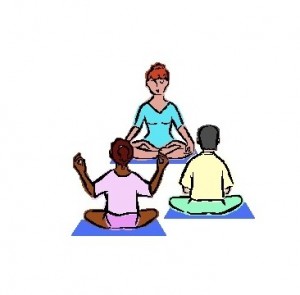- photo by Fern
Yoga in Berlin is about more than just physical exercise. It’s about the multitude of benefits you can receive from consistent practice. Although we never push doctrine on our students, our Hatha and Vinyasa Yoga classes do incorporate a traditional understanding and awareness about how yoga can really change people´s lives when they are off the mat.
In our last blog about the non-physical benefits of yoga, we talked about the pillars of wisdom or ethical guideposts set out by Patanjali as a foundation for practicing yoga (aka the Yoga Sutras). The first being the Yamas and the second being the Niyamas. The Yamas are ethical principles about attitudes and behaviors that cause suffering (greed, dishonesty, violence, etc). The Niyamas (the second limb) are the attitudes and behaviors that yogis can work towards.
Step One: stop the behaviors that cause you to suffer.
Step Two: cultivate ones that bring you peace and happiness.
Saucha
This Niyama is often translated into English as purity or cleanliness. Those words have a lot of judgmental, puritanical cultural baggage in the West, so the way we like to explain the concept of Saucha is ‘lucidity’ or ‘clarity’. In essence, cultivating Saucha means trying to keep your space, body, mind and spirit free of clutter and garbage so that you can perceive and act with the most clarity possible. Some yogis interpret this Niyama through strict dietary observances (no meat, no alcohol) or with spiritual rituals (dawn meditation, intensive asana practice every day etc.) In our English Yoga classes, we interpret it to be about maintaining a dialogue with yourself about how your surroundings/diet/thoughts are affecting you, and striving to maintain a feeling of openness and clarity.
Where could your life benefit from a good ‘spring cleaning’? What relationships, lifestyle habits, thoughts, choices make you feel icky? How could you begin to clean up these areas?
Samtosha
Samtosha means contentment or satisfaction. Again, this can be a difficult Niyama for Westerners to understand because it sounds very close to passivity or acquiescence. But it’s more subtle than those concepts. Samtosha is about cultivating an attitude of equanimity. Yogis who practice for a long time begin to realize that all of reality is fluid, linked, and unchangeable. Underlying life’s ebbs, flows, births and deaths is a basic, unchanging whole experience. This is also the basis of modern physics: energy moves but it cannot be created or destroyed. Cultivating Samtosha means cultivating an attitude of acceptance of constant transformation and contingency. In Asana, cultivating Samtosha means accepting your body for what it is or is not on every given day, and knowing that ”you” are indeed much more than ”your body”!
Can you think of a time in your life where a big change seemed like a total disaster- but you now see that it was for the best? What changes are you afraid of now? Can you imagine accepting those changes, and even welcoming them?























